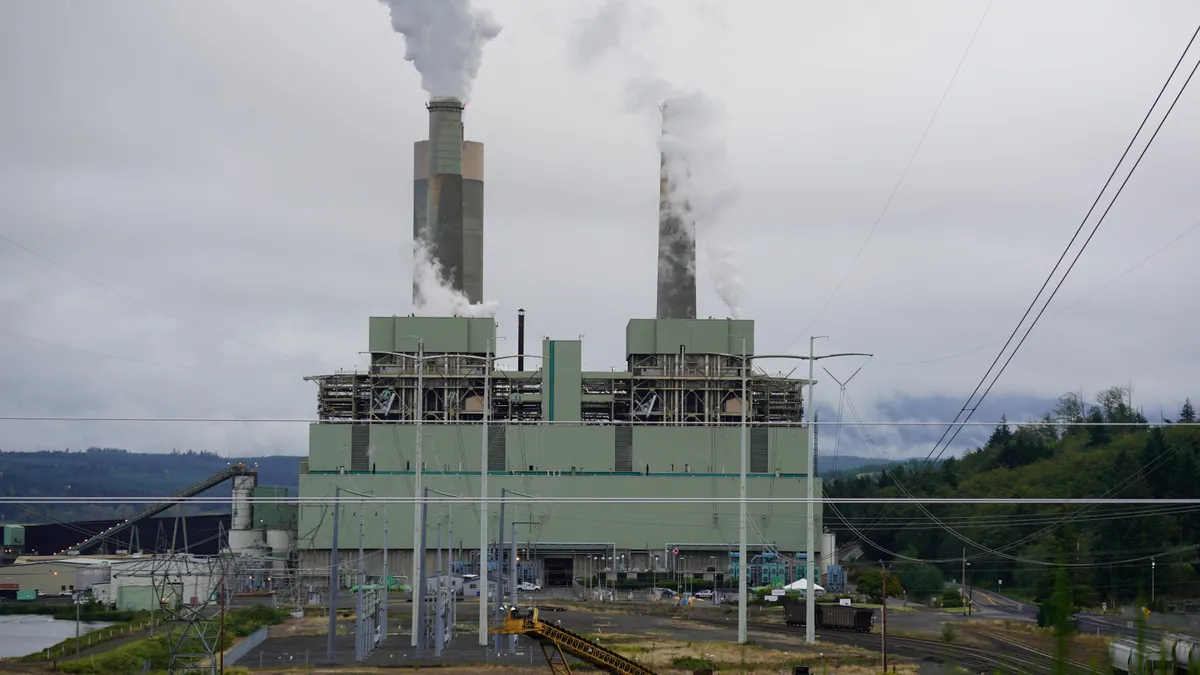Texans were left in the cold and dark this February, following extreme cold weather that had the Texas competitive energy market unable to prevent deadly power failures. Leaving behind its historic commitment to power system independence and joining the larger U.S. grid can relieve some of the consequences of extreme weather events Texas is likely to see again, many energy analysts in and out of Texas said.
"We designed this system for Ozzie and Harriet weather and we now have Mad Max," said Texas energy consultant Alison Silverstein, a former Public Utility Commission of Texas (PUCT) and Federal Energy Regulatory Commission (FERC) adviser, during a Feb. 24 webinar cohosted by the Advanced Power Alliance and Conservative Texans for Energy Innovation. "Texas is now reaping the bitter harvest of avoiding federal transmission regulation and state energy sector regulation."
The Electric Reliability Council of Texas (ERCOT) competitive, energy-only market "seemed like it was saving money until last week, when losses equaled the cost of three years of generation," agreed Rice University Associate Professor of Civil and Environmental Engineering Daniel Cohan. "The free-market ideology ignores risks. Most people want to keep the lights on more than to make a market theory work."
All types of generation, especially natural gas, failed, analysts have widely acknowledged. Leaders must enforce weatherization and build cooperation among the PUCT, ERCOT and municipal authorities to address future crises, many have added. But for its best future, Texas should also consider expanding demand-side resources and connect with out-of-state markets, because the benefits can justify the investments, analysts said.
What actually happened
The average Dallas, Texas, low temperature for February is 39°F. But from Feb. 14-16, 2021, temperatures were significantly lower.
On Feb. 11, power sector agencies began preparing for demand spikes, according to the PUCT. ERCOT asked customers to limit usage on Feb. 14 and announced generation capacity losses and outages starting Feb. 15. Boil water notices and reports of outage-related deaths soon followed.
Early on Feb. 15, when system frequency fell to 59.3 Hertz, the grid was less than 5 minutes from a cascading statewide blackout, ERCOT CEO Bill Magness said at a Feb. 24 ERCOT board meeting. ERCOT called a load shed event that lasted 70.5 hours, according to ERCOT's documentation.
Peak load and outages were significantly higher than Texas has seen, said ICF Wholesale Power Market Advisory Manager Patrick Milligan. Though wind and solar are increasingly important factors in the Texas power system, "they were not a big part of the overall story because both produced generally above the low levels forecast for them."
A data "snapshot" for the morning of Feb. 15 proved accurate for the whole event, Milligan said. The bulk of the "missing capacity" was from natural gas and coal generation outages as well as the loss of about 1.35 GW of nuclear power, he found. "Natural gas production in Texas dropped at least 16% due to frozen wells and plant shutdowns."
It was a cascading failure of all generation types and a failure of transmission at all levels, said Michael Jewell, an advisory board member at Conservative Texans for Energy Innovation and managing partner of energy and infrastructure policy consultant group Jewell & Associates during the Feb. 24 webinar.
Six ERCOT board members including Chair Sally Talberg resigned and another withdrew his candidacy. "I welcome the resignations," Gov. Greg Abbott, R, said. "The lack of preparedness and transparency at ERCOT is unacceptable. We will ensure that the disastrous events of last week are never repeated."
But others said more blame should be attributed the the governor. Energy experts, Texas Democrats and others, "were warning of this for years," former Texas congressperson and senate candidate Beto O'Rourke tweeted Feb. 16. "Abbott chose to ignore the facts, the science and the tough decisions and now Texans will once again pay," he added.
There has been a lot of discussion about what some Texans paid for electricity during the freeze.
About those thousand-dollar bills
In regulated electricity markets, regulators keep rates stable, but in "energy choice" markets like Texas, retail electricity providers (REPs) compete for customers and most of Texas' PUCT-certified REPs offer fixed and variable payment plans. February 2021 demand drove ERCOT's average January real-time $20.79/MWh energy price to an average of $6,579.59/MWh and, at moments, to the PUCT-imposed $9,000/MWh cap.
Some customers discovered variable bill plans can come with price spikes. Houston's Lisa Khoury filed a $1 billion class-action suit against REP Griddy Energy over a $9,546 electricity bill. Other residential customers got $4,000, $5,000, and $7,000 bills. Denton Municipal Electric's $207 million power bill was nearly its $231.4 million annual budget. Brazos Electric Power Cooperative, Texas' biggest co-op filed for bankruptcy.
"The theory is that a high price will bring investments, but people don't invest in things that might only make money sometime in the future unless they are required to," said Jussi Heikkinen, North America Director of Growth and Development for global power plant developer Wärtsilä.
Many choice customers were urged to change plans as the crisis emerged and the biggest responsibility for the economic burdens should fall on regulators, Griddy and other choice providers said in public statements.
"Markets with guardrails can work if they are managed well, but we have managed the ERCOT casino badly and imposed risks on Texas customers," Rice University's Cohan said in the webcast.
"Retail markets did not cause the Texas power outages, and the exact same thing would happen if it was in a regulated structure," former FERC Chair and GridPolicy CEO Jon Wellinghoff disagreed. "Texas does not need to do away with retail energy choice. It probably needs better oversight to ensure that consumers understand the risk, but they should be allowed to take risks if they are fully informed."
Three big fixes
Avoiding future outages involves addressing multiple related issues and "thinking bigger" about what the changing climate and rising renewables penetrations require, Silverstein said.
Transmission
Texas' historical opposition to FERC regulation has made it an "electrical island," ERCOT CEO Bill Magness said in a 2016 interview.
Renewables were more than a quarter of Texas electricity generation in November 2020, based on DOE data. With ERCOT's increasingly dynamic supply and load, Texans may prefer being able to access out-of-state markets, even under federal regulation, to being without electricity, Silverstein said.
Texas should "immediately start negotiations to interconnect with the rest of the country," Wellinghoff said. "That's the fastest route to thousands of MWs of support and it would allow Texas to profit by selling its now-curtailed thousands of MWs of West Texas wind into other systems," he added.
"It is not a political issue," he insisted. "There are no red or blue electrons. This is about saving money and keeping consumers safe."
Texas leaders should also immediately order a study to identify the true costs and benefits of interconnection, both Silverstein and Wellinghoff added.
ERCOT, the PUCT, and the New York grid operator have testified to FERC that wide geographic access to diverse resources strengthens reliability and lowers costs, said Grid Strategies Vice President Michael Goggin. Those benefits were demonstrated in the MISO and PJM markets during the January 2019 Polar Vortex, he said.
In February, the "network inside Texas allowed solar, in-land wind, and coastal wind to work together," Goggin added. "More inter-regional transmission connecting ERCOT, MISO, PJM and the West could have relieved the shortages."
"In times of trouble, it may be that your neighbor or your neighbor's neighbor can help," said Energy Systems Integration Group (ESIG) Associate Director Debra Lew during a Feb. 23 webinar introducing ESIG's white paper on the urgent need for national transmission planning.
ESIG is a global energy industry consultant to power providers, developers, planners, and regulators.
The transition to a renewables-dominated, zero-emissions economy is accelerating, but transmission development is not keeping up, ESIG's Transmission Planning for 100% Clean Electricity reported.
An example is Pattern Energy's 2 GW Southern Cross transmission project to interconnect Texas with Louisiana, Mississippi and the MISO system. First proposed in 2011, construction has not begun, though both FERC and PUCT approvals of the high voltage direct current line "do not affect ERCOT's independent status," Pattern Vice President of Business Development Glen Hodges said.
"The ability to import up to 2 GW of power into Texas during such a crisis would be a tremendous benefit to stability of the ERCOT grid" and "a huge help to Texas consumers," Hodges added.
With unpredictable events and high power prices becoming more common, planners should recognize that inter-regional transmission allows responding "to anything, anywhere," Goggin said.
Planning
But ERCOT does not plan with load or supply forecasting scenarios informed by science-based, climate change-driven extreme weather, Silverstein found in her May 2020 study of the system operator's planning practices.
The freeze raised "legitimate questions" about ERCOT forecasting and modeling datasets because actual conditions "blew through" the forecast, ICF's Milligan said. Whether or not the Texas event was due to climate change, planning models too often overlook critical new correlations in extreme weather events, he added.
"It is not that ERCOT failed, but that new inputs to planning models may be needed," Milligan said. Higher load and increased outages "are not always completely independent of one another" and new broad conditions like fuel supply shortages or weather "can cause widespread outages."
Correlated outages simultaneously affecting many generators have occurred in "about a dozen similar events over the last decade" around the country, Goggin added. "Planners don't recognize correlated outages in extreme weather events, but correlations in planning can show "the value of generation diversity" and confirm that "because all energy sources can be disrupted, being overly dependent on any one isn't wise."
Customer-owned resources
Texas must also ensure adequate market rules, mechanisms, and financial structures to allow distributed resources to provide system services, former FERC Chair Wellinghoff said. The ancillary services market in Texas spiked during the event "because barriers and prohibitions keep the full array of resources from being utilized in the market."
Texas needs a "demand response-energy efficiency-energy storage package" across the state, starting with low income and multifamily housing to address social, health and economic issues," Silverstein agreed. "Energy efficiency is even cheaper than renewables and creates more jobs, which also makes it good politics."
With smart energy management devices, distributed resources can act as "automated demand response" and "buffer the variability of ERCOT's high renewables grid," she added. "ERCOT can take advantage of customer-owned resources as ancillary services products and encourage aggregators to provide them."
But Texas may not be ready to go to work on these opportunities yet, Silverstein said. "We're still in the hand wringing phase, but the next step is to stop looking for villains and start looking for solutions."
Correction: A previous version of this story misstated actions taken by Cirro Energy in response to the winter storm in Texas in February.























